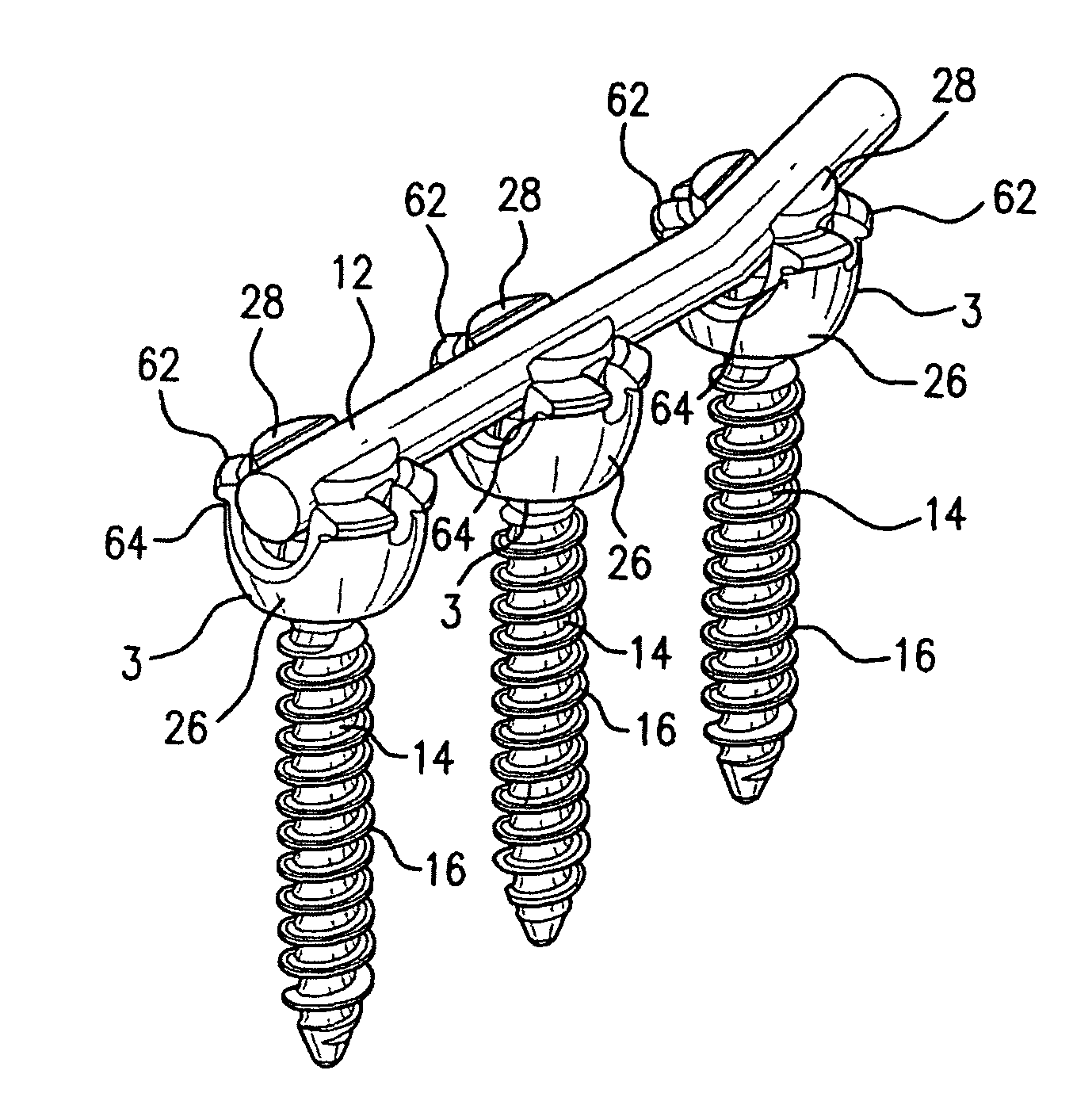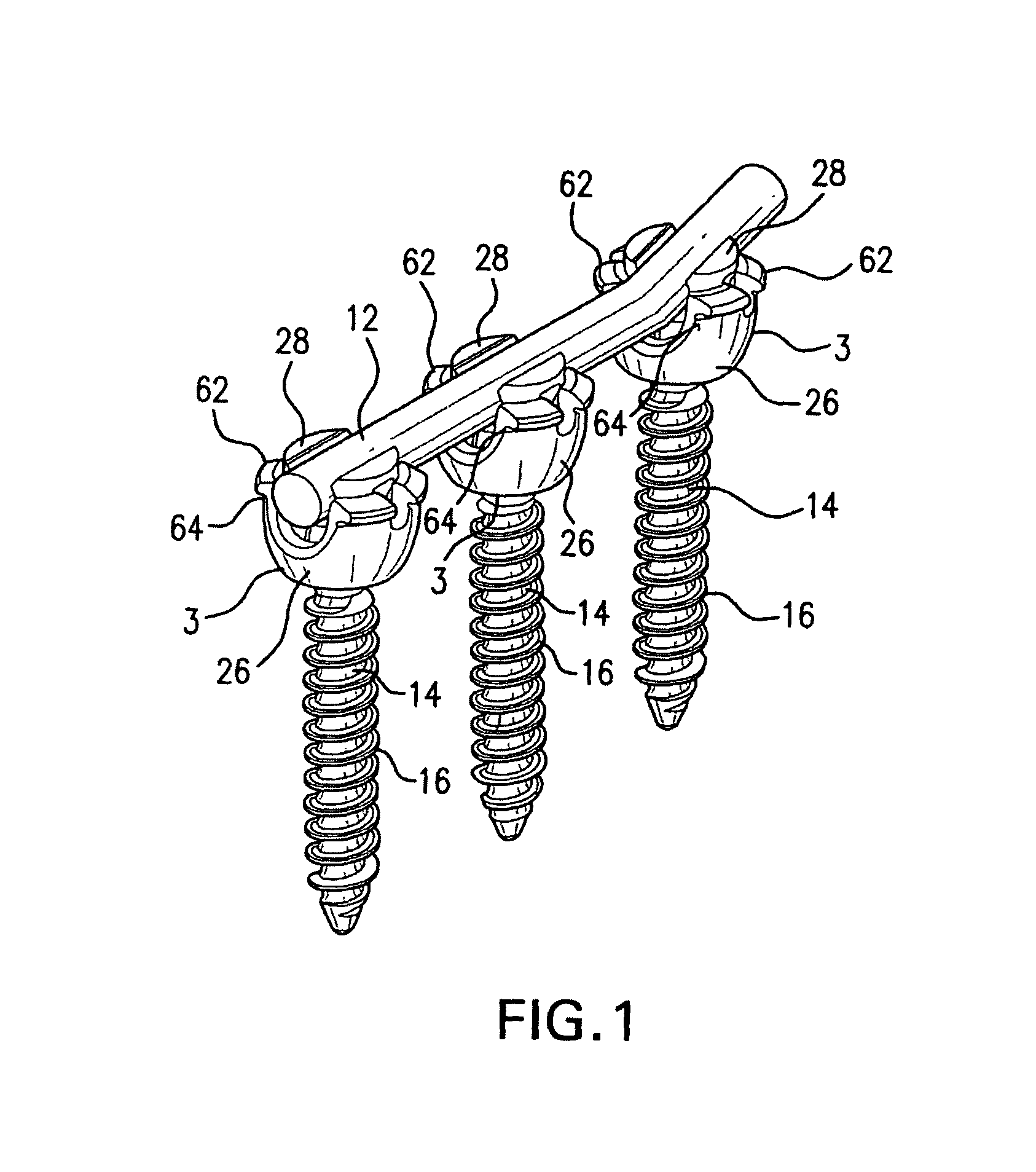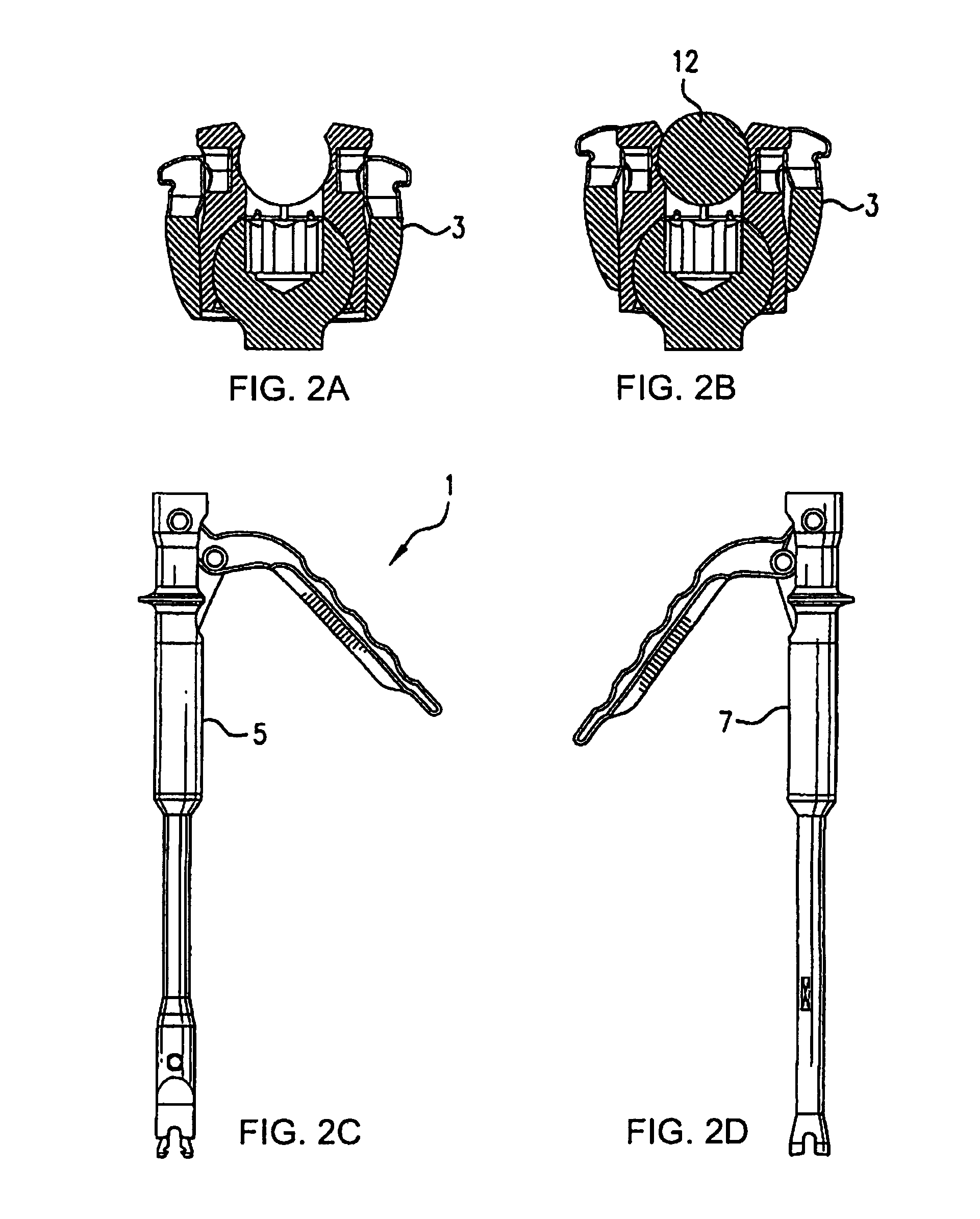Spinal fixation system having locking and unlocking devices for use with a multi-planar, taper lock screw
a multi-planar, taper lock screw technology, applied in the field of orthopaedic surgery, can solve the problems of many conventional devices for locking a spinal rod to a fixation hook or screw, unable to meet the needs of variability, and often experiencing extreme or debilitating pain
- Summary
- Abstract
- Description
- Claims
- Application Information
AI Technical Summary
Benefits of technology
Problems solved by technology
Method used
Image
Examples
Embodiment Construction
[0042]Detailed embodiments are disclosed herein; however, it is understood that the following description is provided as being exemplary of the invention, which may be embodied in various forms without departing from the scope of the claimed invention. Thus, the specific structural and functional details provided in the description are non-limiting, but serve merely as a basis for the invention defined by the claims provided herewith.
[0043]FIG. 1 illustrates an example of a unilateral orthopedic fixation assembly that includes a connecting rod 12 and three separate screw components 3. In the example shown, the connecting rod 12 is a spinal rod having a generally circular cross section; however, it is within the concept of the invention to secure connecting rods of any suitable cross-sectional configuration required for the need at hand.
[0044]The System.
[0045]The novel spinal fixation system is generally shown at 1 in FIGS. 2A-D. FIG. 2A shows the screw component of the system 1 in a...
PUM
 Login to View More
Login to View More Abstract
Description
Claims
Application Information
 Login to View More
Login to View More - R&D
- Intellectual Property
- Life Sciences
- Materials
- Tech Scout
- Unparalleled Data Quality
- Higher Quality Content
- 60% Fewer Hallucinations
Browse by: Latest US Patents, China's latest patents, Technical Efficacy Thesaurus, Application Domain, Technology Topic, Popular Technical Reports.
© 2025 PatSnap. All rights reserved.Legal|Privacy policy|Modern Slavery Act Transparency Statement|Sitemap|About US| Contact US: help@patsnap.com



